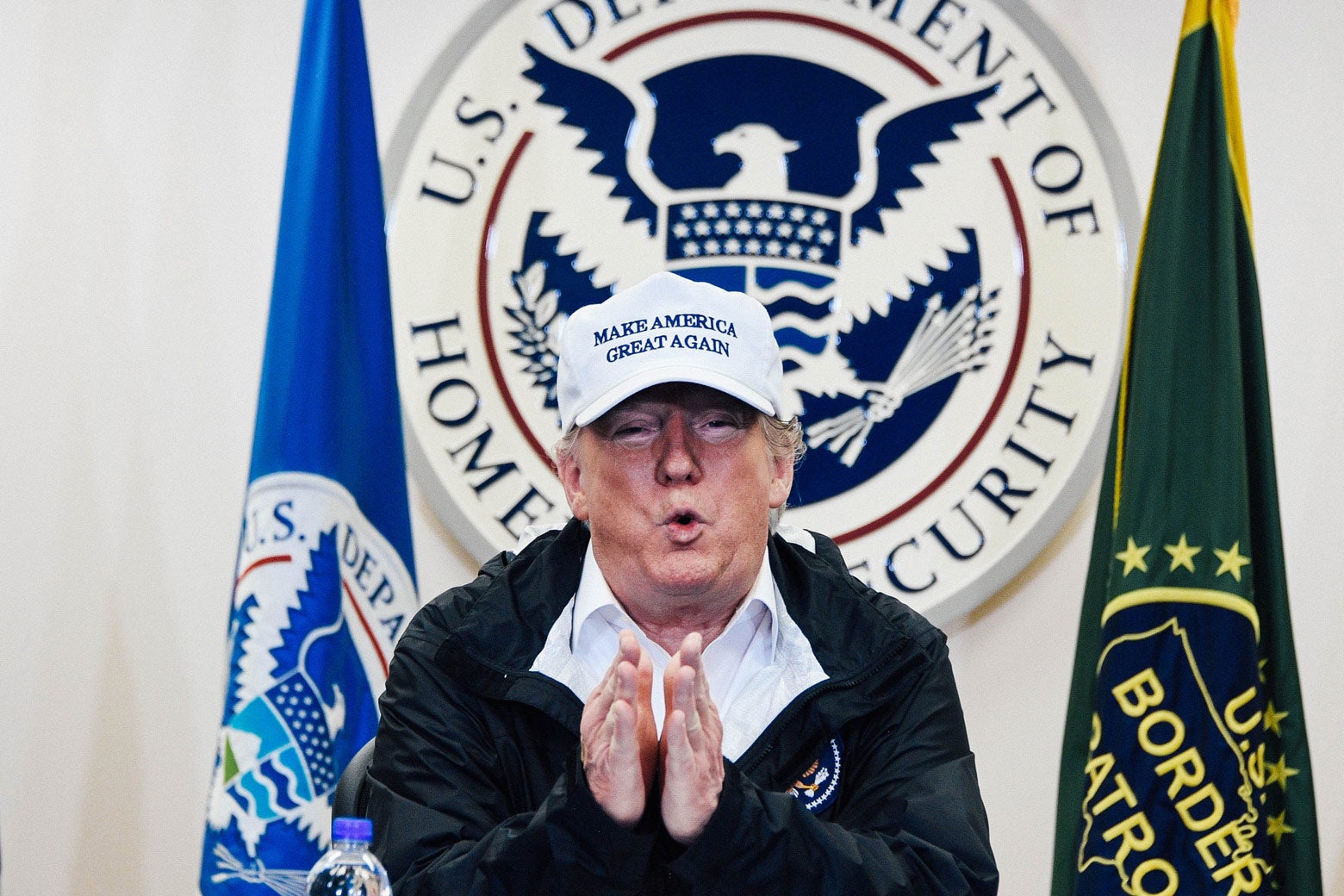There are no longer any meaningful negotiations, or even conversations, taking place on Capitol Hill about how to end the partial government shutdown, now entering its fourth week. And yet despite this complete absence of progress, all players involved are starting to believe that the end is in sight, because there’s only one possible end: Trump declaring a national emergency on the border and directing the military to construct “the wall.”
All Democrats, and a lot of Republicans, would consider this an egregious violation of the law that would set an authoritarian precedent.
But that’s just the glass-half-empty way to look at it! That egregious illegality is key to the maneuver’s growing bipartisan appeal. Trump, the consensus belief goes, could save face with his base by declaring the emergency and reopening the government. The shutdown would be over, loyalist Republicans in Congress could salute Trump’s boldness (and exhale), and Democrats could celebrate that they never wavered from their anti-wall posture. And if (or when) the courts rejected Trump’s plan, Democrats could celebrate the administration’s legal failure, and Trump could throw up his hands and whine about judicial activism.
Some might call this scenario just more cynical blame-shifting insanity from a craven Congress. But one Democratic aide described it to the Washington Post as an “elegant way out of this mess.” In any event, no one has a better idea. No one.
It’s not that progress toward a solution was ever being made during this shutdown. But now even the performative photo-ops giving the appearance of good-faith discussion have ceased. Those ended on Wednesday, when President Trump said “bye-bye” to House Speaker Nancy Pelosi and Senate Democratic leader Chuck Schumer and walked out of a meeting. That meeting, like previous meetings, followed this rough script: Trump asked Pelosi if there was any way he could convince her to provide wall money, or if she would be more amenable to negotiating wall money if he first reopened the government. Pelosi said no and no.
Some Republican senators, led by South Carolina Sen. Lindsey Graham, tried to occupy the void of ideas earlier this week by reviving discussions about going “big”: trying to offer Democrats some sort of protections for Deferred Action for Childhood Arrivals or Temporary Protected Status beneficiaries in exchange for $5.7 billion in wall money. Democrats, though, believe (with good reason) that Trump would back out of any tentative agreement to trade “amnesty” the minute Ann Coulter and the Republican base threatened revolt. And Trump believes he’ll have a stronger hand in DACA negotiations if the Supreme Court decides to take the case and rules that he has the right to terminate the program. So he’s not inclined to tie DACA to the wall right now anyway.
By Thursday, Graham’s big idea had been whittled down to a procedural play. The Senate Appropriations Committee would take up Trump’s $5.7 billion request, open it to amendment, and send the finished product to the floor, all while Trump signed bills to reopen the government. And then once the government was open … that part’s unclear. The inability of this plan to secure any wall money was so obvious that even Trump could immediately recognize it. As Politico reported, he nixed the plan when Vice President Mike Pence and Acting Chief of Staff Mick Mulvaney presented it to him.
With his small idea rejected, Graham arrived at the conclusion that most of Congress had already come around to: “I think we’re stuck,” Graham told reporters. “I just don’t see a pathway forward. I don’t see a way forward.”
“I have never been more depressed about moving forward than I am right now,” he added.
By Friday afternoon, Graham was fully on team #declaretheemergency.
Indeed, Democrats will not negotiate on building the wall, and certainly won’t do so in response to the president taking government workers hostage. They might be able to negotiate on further non-wall border security, but Trump is single-minded in his pursuit of a physical barrier.
Barring some stroke of legislative genius this weekend that manages to reconcile irreconcilable, dug-in positions—wall vs. no wall—and doesn’t settle for face-saving procedural gimmicks about setting up Senate debates that go nowhere, the legislative options for resolving this shutdown are exhausted. Trump, as of Friday afternoon, was still holding out some hope that Congress might reach a deal, saying that he was “not going to [declare the emergency] so fast.” But all Congress is doing is waiting for the president to declare the national emergency and the stimulus package for constitutional lawyers that comes with it. The case could be tied up in courts for years. But at least the government would be open again.
That would have been a great last line of this story, but North Carolina Rep. Mark Meadows, chairman of the Freedom Caucus and one of Trump’s closest congressional allies, told reporters Thursday that Trump may wait to reopen the government while he awaits the outcome in court.
“Declaring a national emergency and funding the government are two separate decisions,” Meadows said.
It’s hard to imagine Trump would keep the government shut down indefinitely as the legal system works its will, and it might be enough for Congress to start thinking about overriding the presidential veto. But crazier things have happened in a national emergency.
